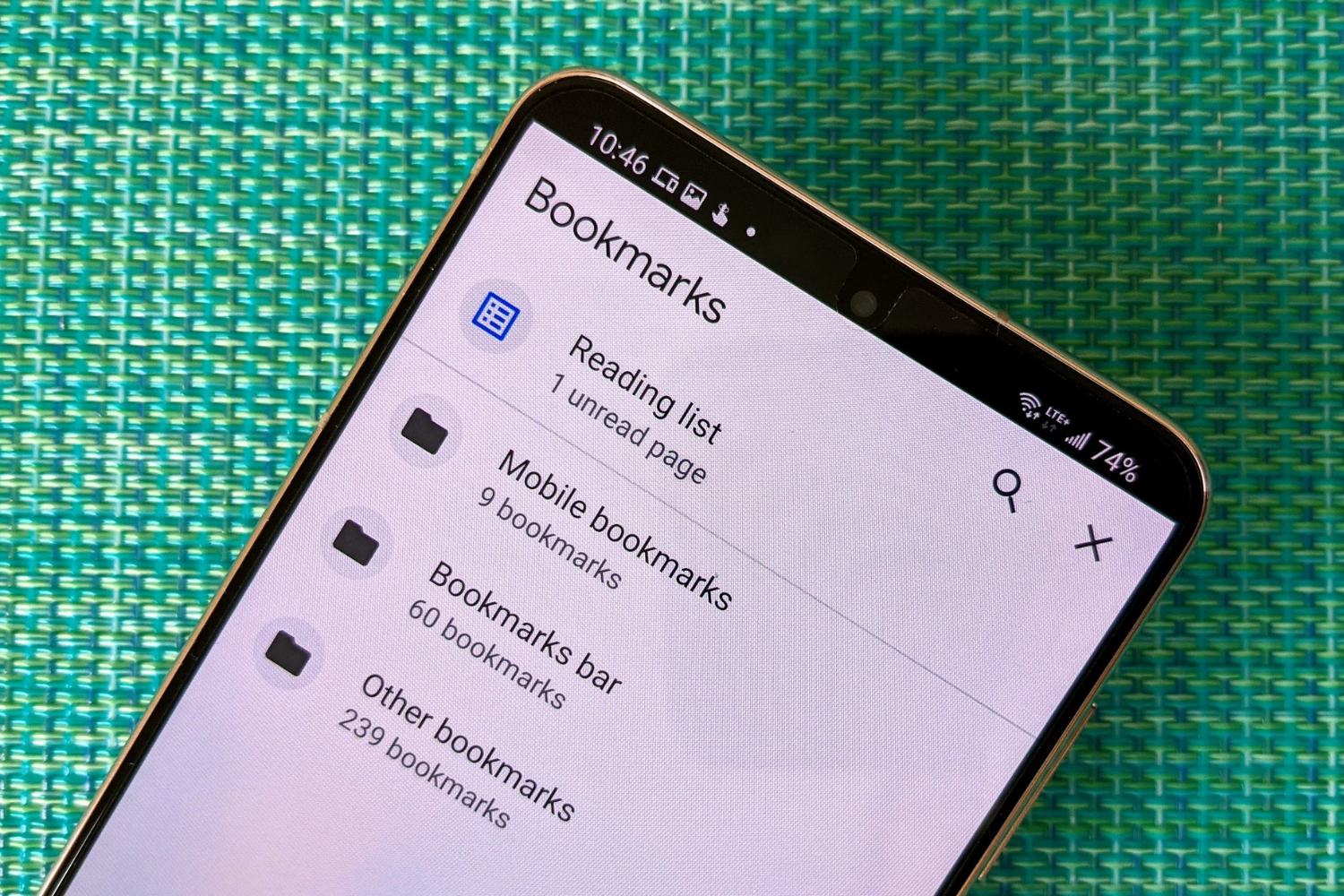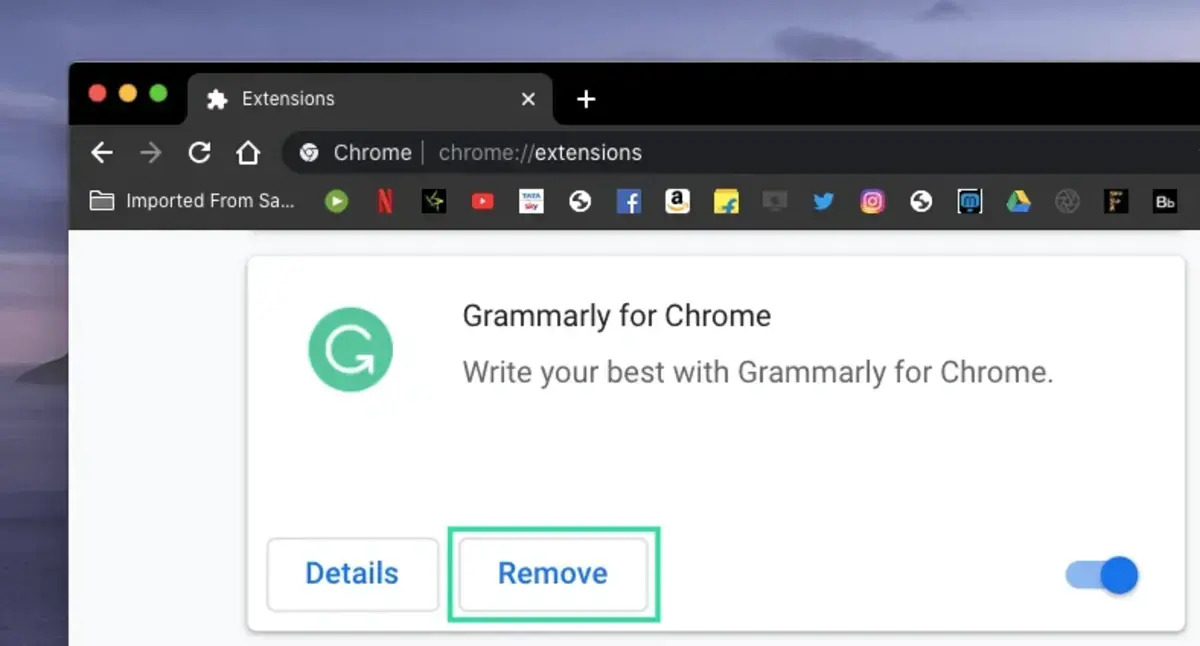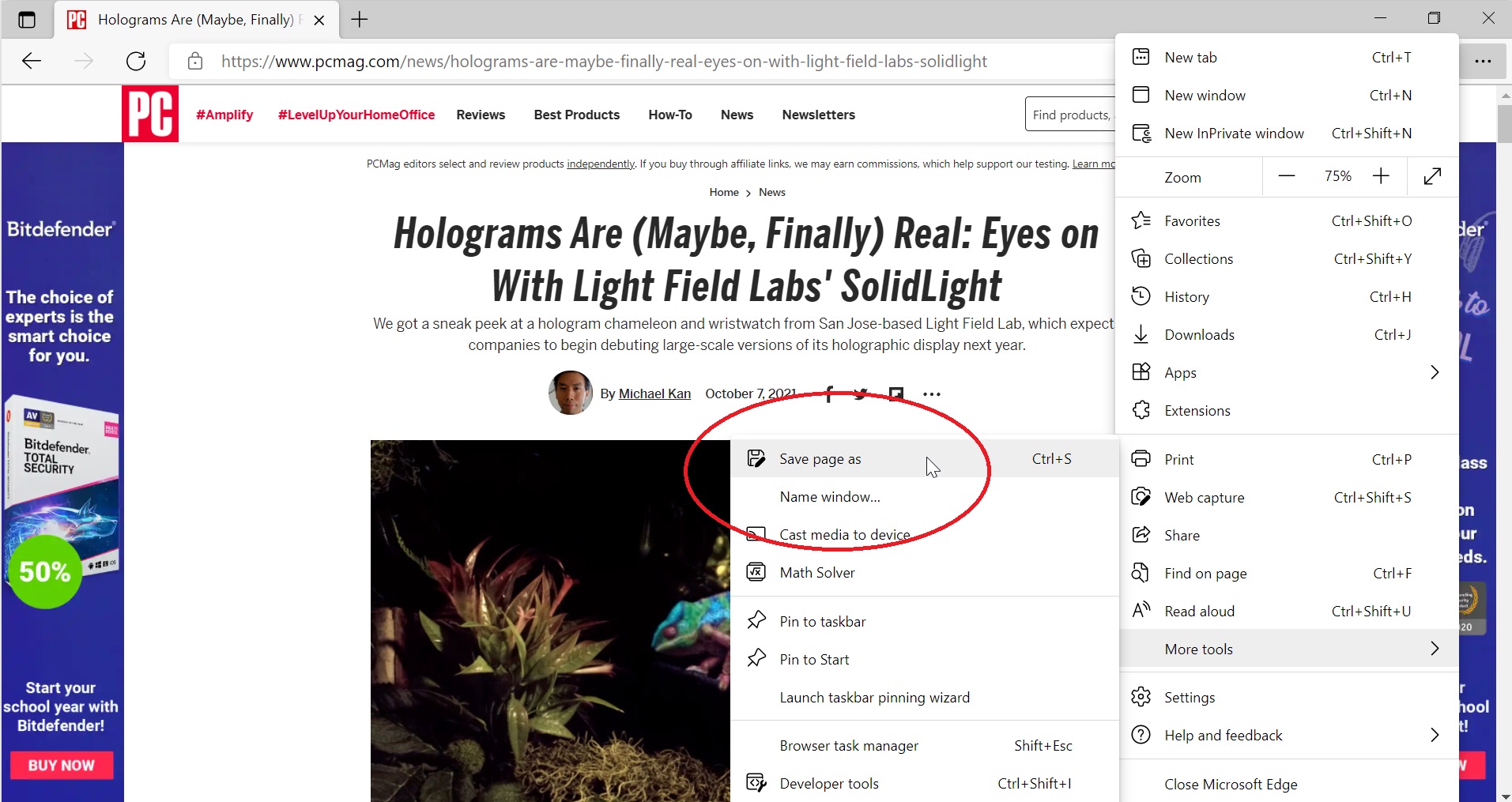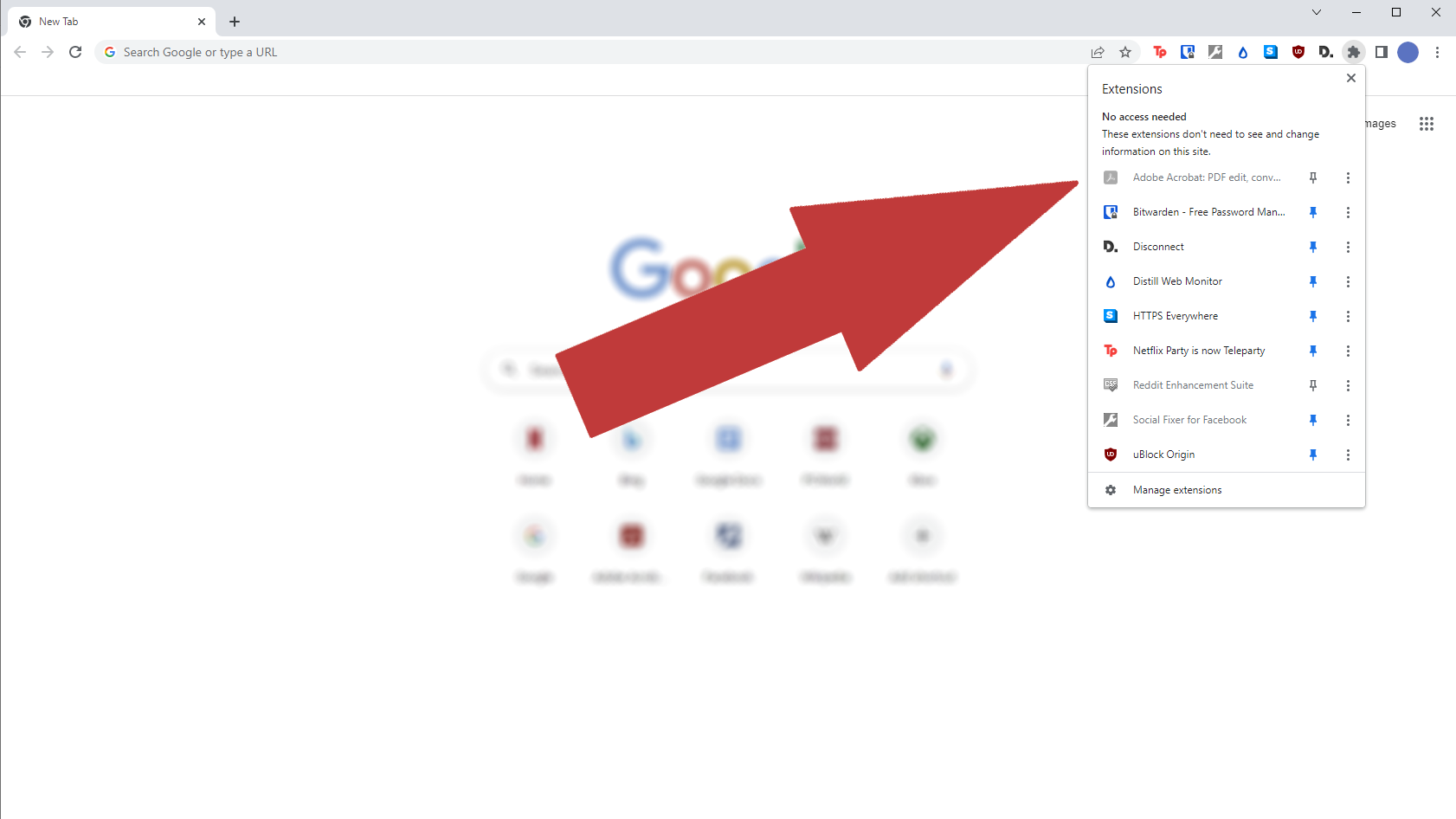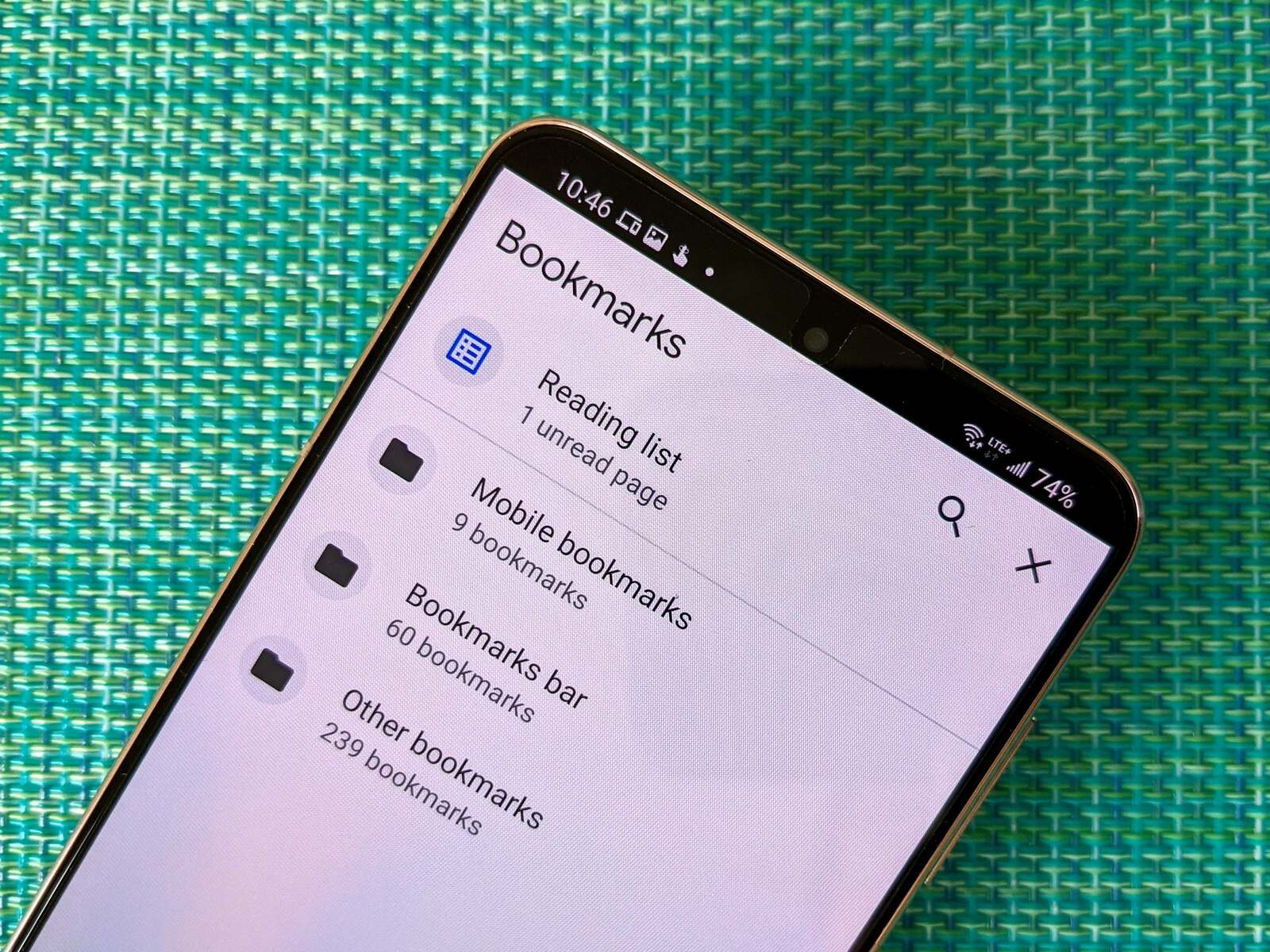Introduction
Google Chrome's Reading List is a nifty feature designed to help users save and organize web pages for later perusal. Whether you stumble upon an intriguing article, a captivating blog post, or a helpful tutorial while browsing the web, the Reading List allows you to earmark these pages for future reference. This feature is particularly handy for individuals who often find themselves pressed for time but wish to revisit interesting content at their convenience.
The Reading List serves as a digital repository for web pages, offering a convenient way to curate a personalized collection of articles, stories, or any other online content that piques your interest. With the Reading List, you can seamlessly access saved pages across different devices, ensuring that your curated content is readily available whenever and wherever you need it.
In this article, we will delve into the ins and outs of Chrome's Reading List, exploring how to access, add, remove, and organize pages within this feature. By the end of this guide, you will be well-equipped to leverage the Reading List to streamline your web browsing experience and effortlessly manage your saved content. Let's embark on this journey to uncover the full potential of Chrome's Reading List and discover how it can revolutionize the way you interact with online content.
How to Access Reading List in Chrome
Accessing the Reading List in Chrome is a straightforward process that allows users to seamlessly retrieve their saved web pages. Whether you're using Chrome on your desktop, laptop, or mobile device, the Reading List is easily accessible, ensuring that your curated content is just a few clicks or taps away.
Desktop Access
On the desktop version of Chrome, locating the Reading List is a breeze. Simply look for the Reading List icon, which resembles a pair of glasses, situated in the upper-right corner of the browser window, next to the address bar. Clicking on this icon will reveal a dropdown menu displaying the pages you've saved to your Reading List. From here, you can effortlessly access any of the saved web pages with a single click.
Mobile Access
For users on mobile devices, accessing the Reading List is equally convenient. Upon opening Chrome on your smartphone or tablet, tap the three-dot menu icon located in the top-right corner of the screen. In the menu that appears, you'll find the "Reading List" option. Tapping on this will lead you to your curated collection of saved web pages, allowing you to dive into your desired content with ease.
Sync Across Devices
One of the standout features of Chrome's Reading List is its seamless synchronization across devices. Whether you've saved a page on your desktop and wish to access it on your smartphone, or vice versa, the Reading List ensures that your curated content is readily available across all your signed-in devices. This synchronization capability adds a layer of convenience, enabling you to pick up where you left off, regardless of the device you're using.
By mastering the art of accessing the Reading List in Chrome, you can effortlessly tap into your curated collection of web pages, ensuring that your saved content is always within reach. With the ability to access your Reading List on desktops, laptops, and mobile devices, Chrome empowers users to take control of their browsing experience and seamlessly engage with their favorite online content.
How to Add Pages to Reading List
Adding pages to Chrome's Reading List is a simple yet powerful feature that allows users to effortlessly save web content for later consumption. Whether you stumble upon an intriguing article, a captivating blog post, or a helpful tutorial, the process of adding these pages to your Reading List is designed to be intuitive and seamless.
Using the Desktop Browser
When browsing the web on your desktop, adding a page to your Reading List is a breeze. Upon encountering a webpage that you wish to save for later, simply click on the star icon located at the right end of the address bar. This action prompts a dropdown menu where you can select the "Add to Reading List" option. Once selected, the page is instantly saved to your Reading List, ready to be accessed at your convenience.
Utilizing the Mobile Browser
For users on mobile devices, the process of adding pages to the Reading List is equally straightforward. While viewing a webpage on your smartphone or tablet, tap the three-dot menu icon located in the top-right corner of the screen. From the menu, select the "Share" option, followed by "Read Later." This action promptly adds the page to your Reading List, ensuring that the content is securely stored for future reference.
Seamless Synchronization
One of the standout advantages of adding pages to the Reading List is the seamless synchronization across devices. Whether you save a page on your desktop, laptop, or mobile device, the Reading List ensures that your curated content is readily available across all your signed-in devices. This synchronization capability adds a layer of convenience, enabling you to access your saved pages from any device, at any time.
By mastering the art of adding pages to the Reading List in Chrome, users can effortlessly curate a personalized collection of web content, tailored to their interests and preferences. This feature empowers users to take control of their browsing experience, ensuring that their favorite online content is always within reach, regardless of the device they are using.
How to Remove Pages from Reading List
Removing pages from Chrome's Reading List is a simple yet essential aspect of managing your curated web content. Whether you've finished reading a saved article, no longer find a page relevant, or simply wish to declutter your Reading List, the process of removing pages is designed to be intuitive and efficient.
Desktop Removal
When using the desktop version of Chrome, removing a page from your Reading List is a seamless task. Begin by clicking on the Reading List icon, denoted by a pair of glasses, located in the upper-right corner of the browser window. This action reveals a dropdown menu displaying the pages you've saved. To remove a specific page, hover your cursor over the page's title and click the three-dot menu icon that appears. From the options presented, select "Remove from Reading List." The page is promptly removed from your curated collection, streamlining your Reading List to reflect your current interests and priorities.
Mobile Removal
For users on mobile devices, the process of removing pages from the Reading List is equally straightforward. Upon opening Chrome on your smartphone or tablet, tap the three-dot menu icon located in the top-right corner of the screen. In the menu that appears, select the "Reading List" option. This action leads you to your curated collection of saved web pages. To remove a page, simply long-press on the page's title until a menu pops up. From the menu, select "Remove," and the page is promptly eliminated from your Reading List, allowing you to maintain a tidy and relevant collection of saved content.
Streamlined Organization
By mastering the art of removing pages from the Reading List in Chrome, users can effectively manage their curated web content, ensuring that their collection remains relevant and tailored to their current interests. This feature empowers users to declutter their Reading List, making room for new and engaging content while maintaining a personalized repository of saved web pages.
The ability to effortlessly remove pages from the Reading List underscores Chrome's commitment to providing users with a seamless and customizable browsing experience. By incorporating this feature into your browsing routine, you can ensure that your Reading List remains a curated collection of content that truly resonates with your preferences and interests.
How to Organize Reading List
Organizing the Reading List in Chrome is a pivotal aspect of maximizing its utility and ensuring that your curated web content remains easily accessible and relevant. By implementing effective organization strategies, users can streamline their Reading List, categorize saved pages, and maintain a well-structured repository of online content.
Customizing Page Order
Chrome's Reading List allows users to customize the order of saved pages, enabling them to prioritize content based on their preferences and reading priorities. By simply dragging and dropping pages within the Reading List interface, users can rearrange the order in which the pages appear. This feature empowers users to bring their most relevant and timely content to the forefront, ensuring that the most important pages are readily accessible.
Creating Folders
To further enhance organization, Chrome offers the ability to create folders within the Reading List. This feature enables users to categorize their saved pages based on topics, interests, or any other criteria that align with their browsing habits. By creating folders such as "Technology," "Travel," "Recipes," or any other personalized categories, users can effectively compartmentalize their curated content, making it easier to locate specific pages when needed.
Utilizing Labels and Tags
In addition to folders, Chrome's Reading List allows users to apply labels or tags to saved pages, providing an additional layer of organization. By assigning descriptive labels such as "Must Read," "Research," "Inspiration," or any custom tags that resonate with their content preferences, users can quickly identify and filter pages based on specific criteria. This labeling system enhances the overall organization of the Reading List, allowing users to efficiently manage and navigate their curated content.
Removing Duplicates and Outdated Content
Regularly reviewing and decluttering the Reading List is essential for maintaining its relevance. Users can periodically assess their saved pages, removing duplicates, outdated content, or items that no longer align with their interests. This proactive approach ensures that the Reading List remains a curated collection of fresh and valuable web content, free from redundancy and clutter.
By leveraging these organization strategies, users can transform their Reading List into a well-structured and personalized repository of online content. The ability to customize page order, create folders, apply labels, and declutter outdated content empowers users to curate a Reading List that aligns with their browsing habits and preferences, ultimately enhancing their overall web browsing experience.
Conclusion
In conclusion, Chrome's Reading List stands as a versatile tool that empowers users to curate, organize, and access their favorite web content with unparalleled ease. By seamlessly integrating the Reading List into their browsing routine, users can transform their web browsing experience, ensuring that valuable articles, captivating stories, and informative resources are always within reach.
The ability to access the Reading List across desktop and mobile devices underscores Chrome's commitment to providing a seamless and synchronized browsing experience. Whether users are at their desks or on the go, their curated collection of web pages remains readily accessible, allowing for uninterrupted engagement with their saved content.
Furthermore, the intuitive process of adding and removing pages from the Reading List ensures that users can effortlessly manage their curated content, tailoring their collection to reflect their current interests and priorities. This streamlined approach to content curation enables users to maintain a relevant and personalized repository of web pages, free from clutter and redundancy.
The organizational capabilities offered by the Reading List, including customizing page order, creating folders, and applying labels, provide users with the tools to structure their curated content according to their preferences. This level of customization enhances the overall browsing experience, allowing users to navigate and engage with their saved pages in a manner that aligns with their individual browsing habits.
Ultimately, Chrome's Reading List serves as a testament to the browser's commitment to empowering users with tools that enhance their online interactions. By embracing the Reading List as a means to curate, organize, and access web content, users can elevate their browsing experience, ensuring that their favorite articles, stories, and resources are always at their fingertips.
Incorporating the Reading List into one's browsing routine not only streamlines content management but also fosters a deeper connection with online material, allowing users to engage with their curated content in a manner that aligns with their interests and preferences. As users continue to leverage the Reading List, they are poised to unlock the full potential of Chrome as a platform that caters to their individualized browsing needs.







